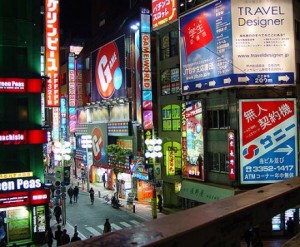 Before it gets too far into the New Year, I want to point out an interesting article in The Guardian on 20 predictions for the next 25 years.
Before it gets too far into the New Year, I want to point out an interesting article in The Guardian on 20 predictions for the next 25 years.
There are predictions for vaccines: No more AIDS, no more malaria, no more measles and rotavirus in developing countries. Neuroscience: “We’ll be able to plug information streams directly into the cortex”. Health: We’ll feel less healthy. (emphasis added)
Life expectancy is rising about three months each year, but we’ll feel less healthy, partly because we’ll be more aware of the many things that are, or could be, going wrong, and partly because more of us will be living with a long-term condition.
Being more aware of what could be wrong with us, and believing (and thus feeling) we’re less healthy as a result, has been going on since the advent of advertising. This proces has been greatly accelerated, however, by electronic mass media and now the Internet.
But the prediction I found most interesting was about advertising, offered by Russell Davies of Ogilvy and Mather. (emphasis added)
[W]hat’ll really change advertising will be how we relate to it and what we’re prepared to let it do. … [W]hen you look at advertising from the past, … what seems startlingly alien are the attitudes it was acceptable to portray and the products you were allowed to advertise.
In 25 years, I bet there’ll be many products we’ll be allowed to buy but not see advertised – the things the government will decide we shouldn’t be consuming because of their impact on healthcare costs or the environment but that they can’t muster the political will to ban outright. So, we’ll end up with all sorts of products in plain packaging with the product name in a generic typeface. …
But it won’t stop there. We’ll also be nudged into renegotiating the relationship between society and advertising, because over the next few years we’re going to be interrupted by advertising like never before. Video screens are getting so cheap and disposable that they’ll be plastered everywhere we go. And they’ll have enough intelligence and connectivity that they’ll see our faces, do a quick search on Facebook to find out who we are and direct a message at us based on our purchasing history.
At least, that’ll be the idea. It probably won’t work very well and when it does work it’ll probably drive us mad. Marketing geniuses are working on this stuff right now, but not all of them recognise that being allowed to do this kind of thing depends on societal consent – push the intrusion too far and people will push back.
Society once did a deal accepting advertising because it seemed occasionally useful and interesting and because it paid for lots of journalism and entertainment. It’s not necessarily going to pay for those things for much longer so we might start questioning whether we want to live in a Blade Runner world brought to us by Cillit Bang.
Cillit Bang is a cleanser advertised heavily in the UK. Here’s the 30-second spot where Cillit Bang removes grime from a one pence coin.
Related post:
Do gruesome graphics deter or promote smoking?
Sin taxes: Financing health care with soda pop
Coughing Up Blood Money: The hit parade of cigarette ads
Direct-to-consumer: The ads we love to hate
Resources:
Image: geek.com
20 predictions for the next 25 years, The Guardian, January 2, 2011


Sorry, comments are closed for this post.